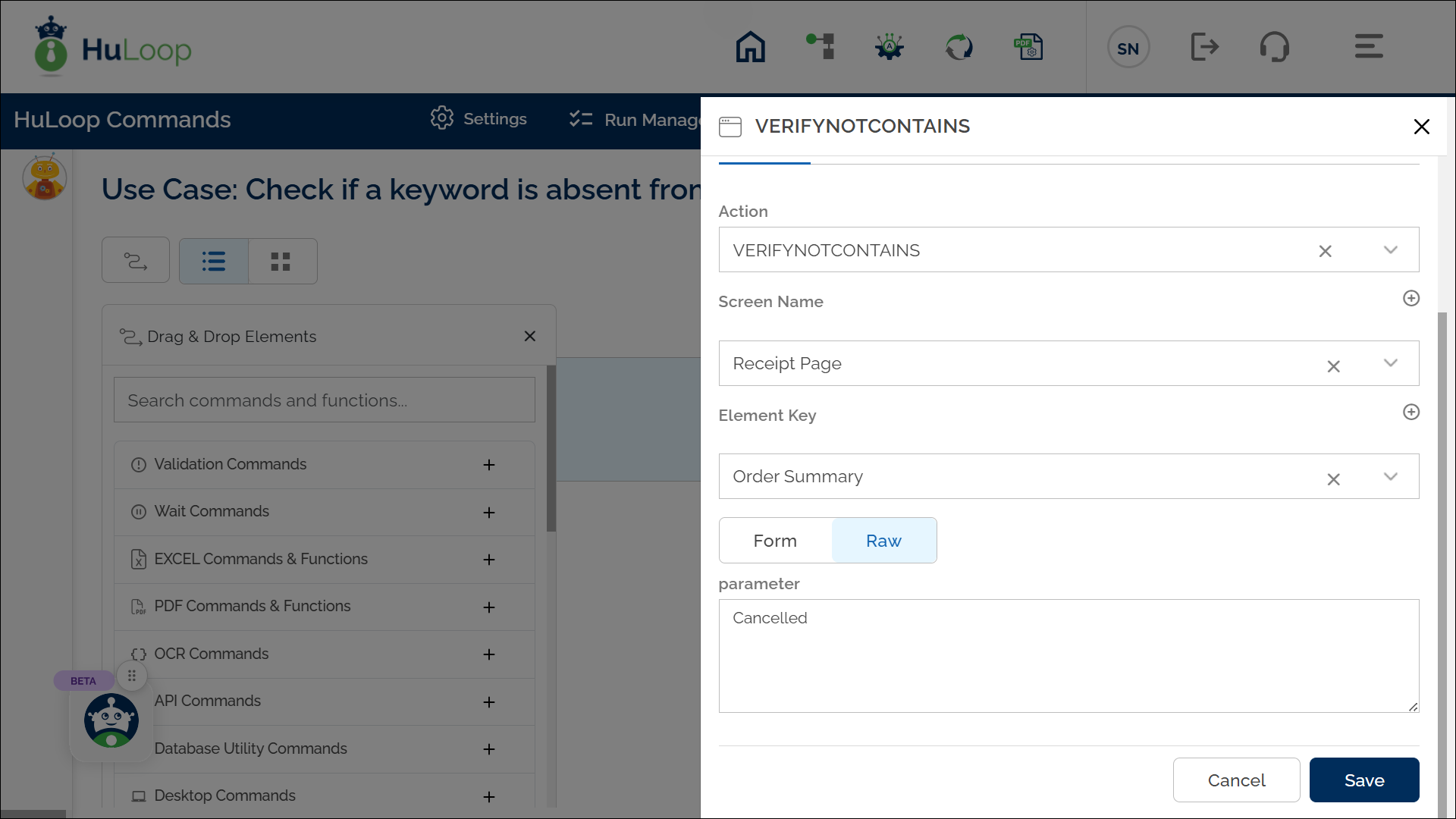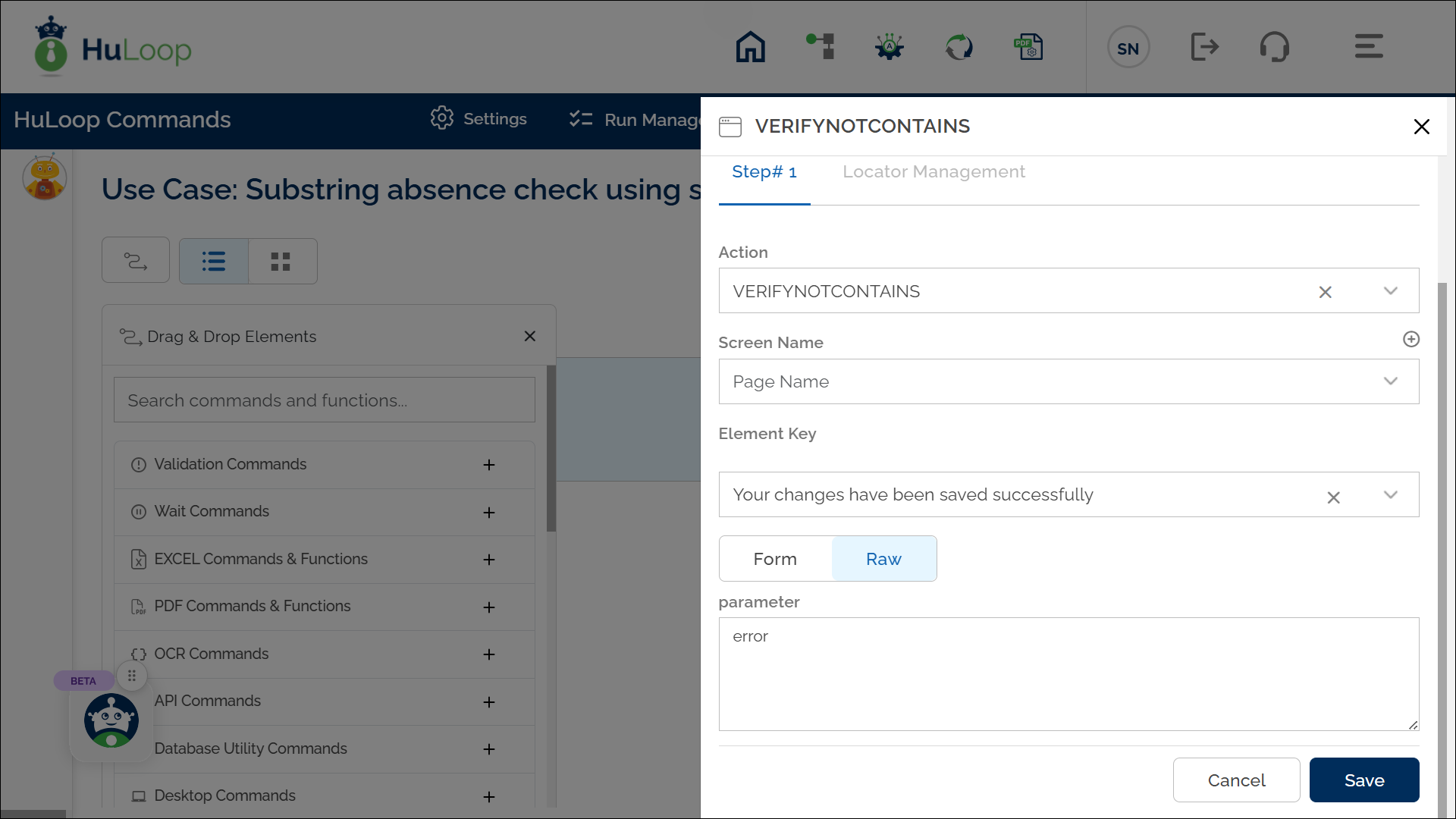Verify Absence of Substring: VERIFYNOTCONTAINS
The Verify Absence of Substring action checks if a specific text or number is not present within a larger value. This action is useful for verifying that certain words, phrases, or numbers do not appear in an element’s text. The left-hand side (LHS) value is taken from an element on the screen, while the right-hand side (RHS) value is entered in the parameter section. The RHS can be a hard-coded value or a variable. If a locator (page and element) is provided, the LHS will be the text found at that locator.
Example 1: Check if a keyword is absent from UI text.
Scenario: Let’s verify that the Order Summary section on a receipt page does not contain the word “Cancelled.”
Steps to configure:
- Add a new step.
- Select VERIFYNOTCONTAINS from the Action drop-down.
- In the Screen Name field, select the screen where the LHS element is located (e.g., Receipt Page).
- In the Element Key field, select the element representing the LHS value (e.g., Order Summary).
- In the Parameters section, enter the RHS value you want to confirm is absent (e.g., “Cancelled”).
- Click Save.
Expected Outcome on execution:
- The Verify Absence of Substring action will check if the LHS value (e.g., the text in Order Summary) does not include the RHS value (e.g., “Canceled”).
- If the substring is absent, the action will pass, confirming that the unwanted text or value is not present.
- If the substring is found, the action will fail, indicating that the undesired content is present.
Example 2: Substring absence check using string values only
Scenario: You want to confirm that the phrase “error” does not appear in the system message “Your changes have been saved successfully.”.
Steps to configure:
- Add a new step.
- Select VERIFYNOTCONTAINS from the Action drop-down.
- Leave the Screen Name field blank.
- In the Element Key field, enter the full LHS string (e.g., Your changes have been saved successfully).
- In the Parameters section, enter the RHS value to check for absence (e.g., error).
- Click Save.
Expected Outcome on Execution:
- If the LHS value does not contain the RHS substring, the action will pass.
- If the RHS substring is found, the action will fail, indicating unexpected or unwanted content is present.


